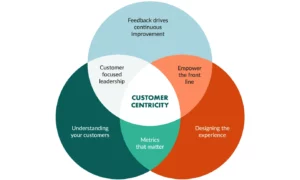Reliability solutions and strategies are essential for ensuring the reliability and dependability of a product. These solutions aim to identify and address potential issues and failures that may occur, and to prevent or minimize their impact on the operation of the product.
One common approach to reliability solutions is design for reliability, which involves incorporating reliability-enhancing features into the design of a product. This can include using redundant components and fail-safe mechanisms, as well as incorporating robust and high-quality materials and components.
Another important reliability strategy is reliability testing, which involves subjecting a product to rigorous testing to identify potential failure points and to verify that it meets specified reliability standards. This can include testing the product under various conditions and environments, as well as simulating potential failure scenarios to ensure that the product can withstand such conditions.
Reliability analysis is another key strategy for ensuring the reliability of a product. This involves using statistical and mathematical techniques to model and predict the reliability of a product, and to identify potential areas for improvement. This can include analyzing data on previous failures and identifying patterns or trends, as well as using predictive modeling techniques to forecast future failure rates.
Overall, effective reliability solutions and strategies are essential for ensuring the performance and satisfaction of customers, and for maintaining the reputation and competitiveness of a business. Also checkout the latest tech business news.
Reliability solutions aim to identify and address potential issues and failures
Reliability solutions aim to identify and address potential issues and failures that may occur, and to prevent or minimize their impact on the operation of a product. These solutions are essential for ensuring the reliability and dependability of a product, and for maintaining the performance and satisfaction of customers.
There are several approaches to reliability solutions, depending on the specific requirements and needs of the product. One common approach is design for reliability, which involves incorporating reliability-enhancing features into the design of a product. This can include using redundant components and fail-safe mechanisms, as well as incorporating robust and high-quality materials and components.
Another important reliability solution is reliability testing, which involves subjecting a product to rigorous testing to identify potential failure points and to verify that it meets specified reliability standards. This can include testing the product under various conditions and environments, as well as simulating potential failure scenarios to ensure that the product can withstand such conditions.
Reliability analysis is another key solution for ensuring the reliability of a product. This involves using statistical and mathematical techniques to model and predict the reliability of a product, and to identify potential areas for improvement. This can include analyzing data on previous failures and identifying patterns or trends, as well as using predictive modeling techniques to forecast future failure rates.
Overall, effective reliability solutions are essential for ensuring the performance and satisfaction of customers, and for maintaining the reputation and competitiveness of a business.
Examples of reliability solutions
There are several examples of reliability solutions, which are methods and strategies used to ensure the reliability and dependability of a product, system, or service. These solutions aim to identify and address potential issues and failures that may occur, and to prevent or minimize their impact on the operation of the product, system, or service.
One common example of a reliability solution is design for reliability, which involves incorporating reliability-enhancing features into the design of a product, system, or service. This can include using redundant components and fail-safe mechanisms, as well as incorporating robust and high-quality materials and components. For instance, a car manufacturer may incorporate multiple backup systems for the braking system, such as a hydraulic brake assist and an electronic brake force distribution system, to ensure that the car can stop safely even if one of the systems fails.
Another example of a reliability solution is reliability testing, which involves subjecting a product, system, or service to rigorous testing to identify potential failure points and to verify that it meets specified reliability standards. This can include testing the product under various conditions and environments, as well as simulating potential failure scenarios to ensure that the product can withstand such conditions. For instance, a laptop manufacturer may subject their laptops to temperature, humidity, and shock tests to ensure that they can operate reliably in a wide range of environments.
Reliability analysis is another example of a reliability solution. This involves using statistical and mathematical techniques to model and predict the reliability of a product, system, or service, and to identify potential areas for improvement. This can include analyzing data on previous failures and identifying patterns or trends, as well as using predictive modeling techniques to forecast future failure rates. For instance, a power grid operator may use reliability analysis to identify potential weak points in the grid, and to implement preventative measures to reduce the likelihood of power outages.
Overall, there are many different examples of reliability solutions, which can be tailored to the specific requirements and needs of a product, system, or service. Also, Implementing effective reliability solutions is essential for ensuring the performance and satisfaction of customers, and for maintaining the reputation and competitiveness of a business.
Implementing effective reliability solutions is essential for ensuring the performance and satisfaction of customers
Implementing effective reliability solutions is essential for ensuring the reliability and dependability of a product, system, or service. These solutions aim to identify and address potential issues and failures that may occur, and to prevent or minimize their impact on the operation of the product, system, or service.
There are several steps involved in implementing effective reliability solutions, which can vary depending on the specific requirements and needs of the product, system, or service.
The first step is to identify the key reliability requirements and objectives of the product, system, or service. This may involve consulting with customers, stakeholders, and experts to determine the specific reliability standards and expectations that the product, system, or service must meet.
The next step is to design or select the appropriate reliability solutions for the product, system, or service. This may involve incorporating reliability-enhancing features into the design of the product, or selecting suitable reliability testing and analysis methods and tools.
Once the reliability solutions have been designed or selected, the next step is to implement them. This may involve conducting reliability testing, performing reliability analysis, and implementing any necessary design changes or improvements.
Finally, the effectiveness of the reliability solutions must be monitored and evaluated over time. This may involve collecting data on the performance and reliability of the product, system, or service, and using this data to identify potential areas for improvement and to make necessary adjustments to the reliability solutions.
Overall, implementing effective reliability solutions requires careful planning and execution, as well as ongoing monitoring and evaluation to ensure that the solutions are meeting the desired reliability objectives. By implementing effective reliability solutions, businesses can ensure the performance and satisfaction of customers, and maintain the reputation and competitiveness of their products, systems, and services.

































